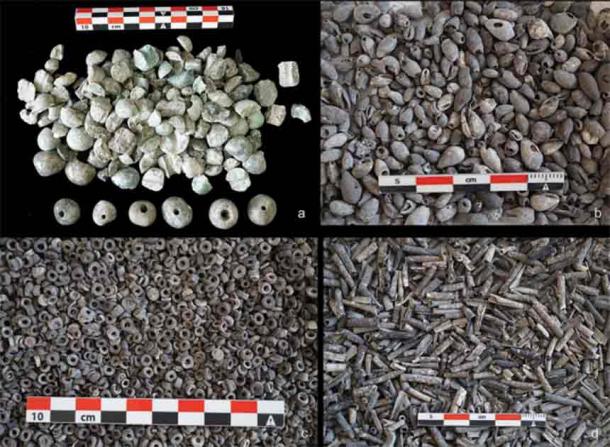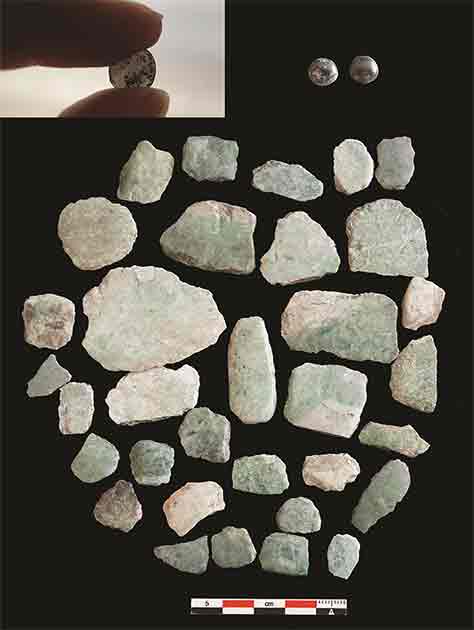🔴 Website 👉 https://u-s-news.com/
Telegram 👉 https://t.me/usnewscom_channel
Researchers in Guatemala have unearthed fascinating evidence of a dramatic ritual burning of royal remains, pointing to a significant political shift in the ancient Maya city of Ucanal. This find not only adds a vivid chapter to our understanding of Maya political dramas but also marks a rare moment where such transitions are visible in the archaeological record.
Political Upheaval in Maya History
During the early ninth century AD, the Maya Lowlands were a scene of intense political transformations. The kingdom of K’anwitznal, previously a relatively obscure polity, rose to prominence under the leadership of Papmalil, potentially a foreign ruler. This period, fraught with dynastic collapses and realignments, saw the Maya actively engaging in reshaping their political landscapes rather than merely witnessing their decline towards the end of the Classic period.
The new research published in Antiquity and led by Dr. Christina T. Halperin from the University of Montreal offers compelling evidence of these shifts. Excavations at a temple-pyramid complex in Ucanal have revealed a deposit of burned human remains and ornaments, suggesting a public, ceremonial act of political defiance or renewal.
Burnt ornaments from the Burial 20-1 deposit: a) medium spheroid greenstone beads (UC-PV-028); b) Prunum apicinum and other marine shell beads; c) marine shell discs; d) marine shell ornaments. (C. Halperin/Antiquity)
Ritual Burning as a Ceremonial Desecration
The artifacts found at the site include items typically associated with Maya royalty, such as a greenstone mask and jade ornaments, indicating the high status of the individuals whose remains were burned. Radiocarbon dating places the event between AD 773-881, well after the death of these royal figures, suggesting that their tombs were reopened for the specific purpose of this ritual.
This act of burning, likely viewed by a gathering of the local populace, was not merely a farewell to past rulers but a deliberate desecration symbolizing the end of one era and the start of another under new governance. It coincided with architectural changes at Ucanal, where elite buildings were dismantled and repurposed, further emphasizing the dramatic overhaul of the social and political order.
Fragments of a greenstone mosaic mask with polished obsidian eye pupils. (C. Halperin/Antiquity)
Symbolic Reinterpretation and Social Transformation
Dr. Halperin points out that this event was emblematic of broader shifts in Maya society during this turbulent period. The reign of Papmalil and the associated ritual activities introduced new forms of monumental imagery and altered societal structures, fostering horizontal political ties over the hierarchical systems of the past.
This transformative era, therefore, was not just about the destruction of the old but about the strategic reconfiguration of the Maya social and political fabric. The burning ritual served as a pivot point around which the K’anwitznal polity, and perhaps other regions of the southern Maya Lowlands, sought to redefine themselves and their future.
The discovery at Ucanal provides new details on the dynamic and ceremonial nature of political change among the ancient Maya. It underscores the complexity of their societal systems and the active role they took in directing their political destinies.
Top image: Left; Carved pendant plaque of a human head from the burial. Right; Jade Mask in fragments. Source: C. Halperin/Antiquity
By Gary Manners
References
Halperin, Christina T. et al. 2024. ‘ A pivot point in Maya history: fire-burning event at K’anwitznal (Ucanal) and the making of a new era of political rule’. Antiquity Publications Ltd. CUP. Available at: https://doi.org/10.15184/aqy.2024.38


